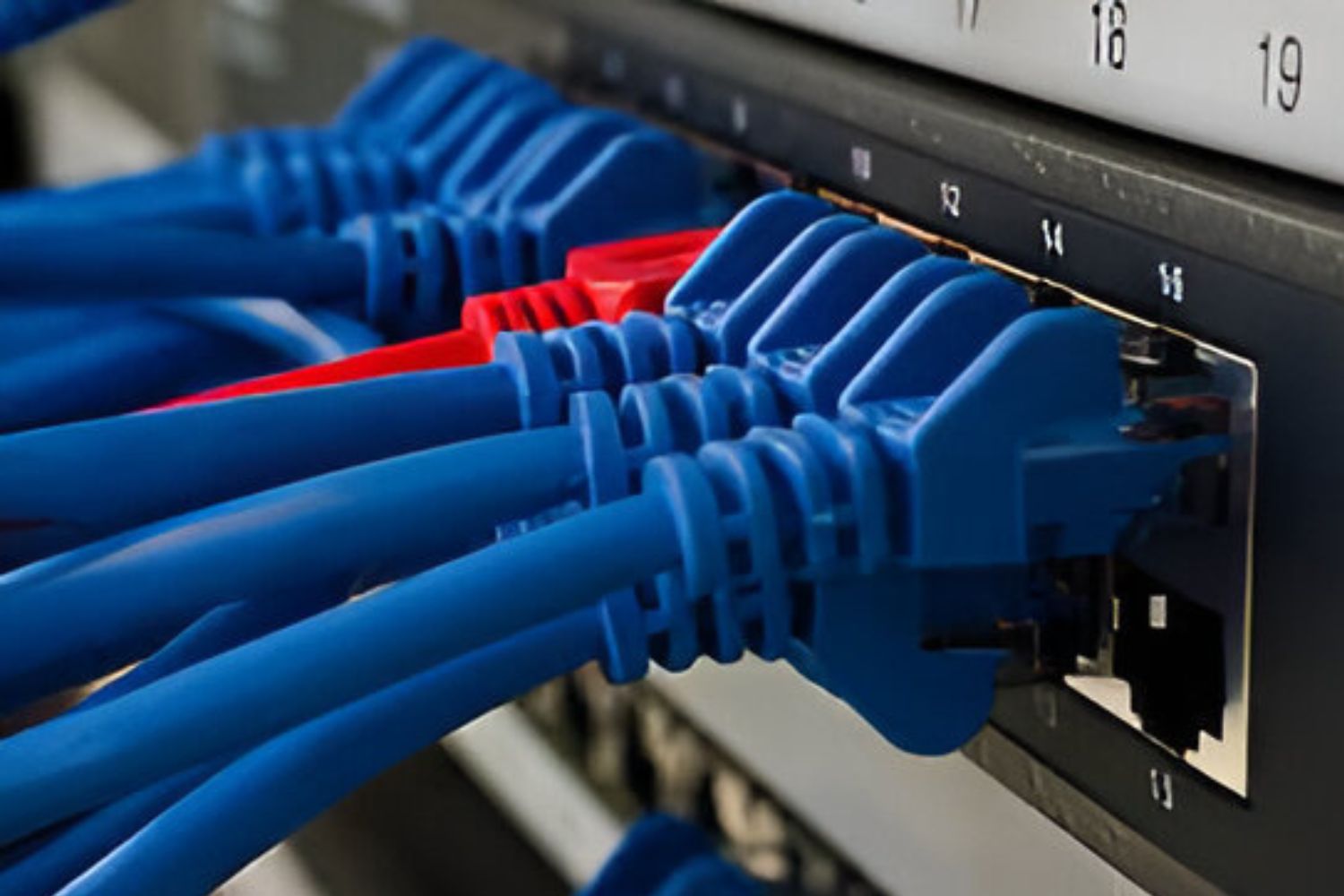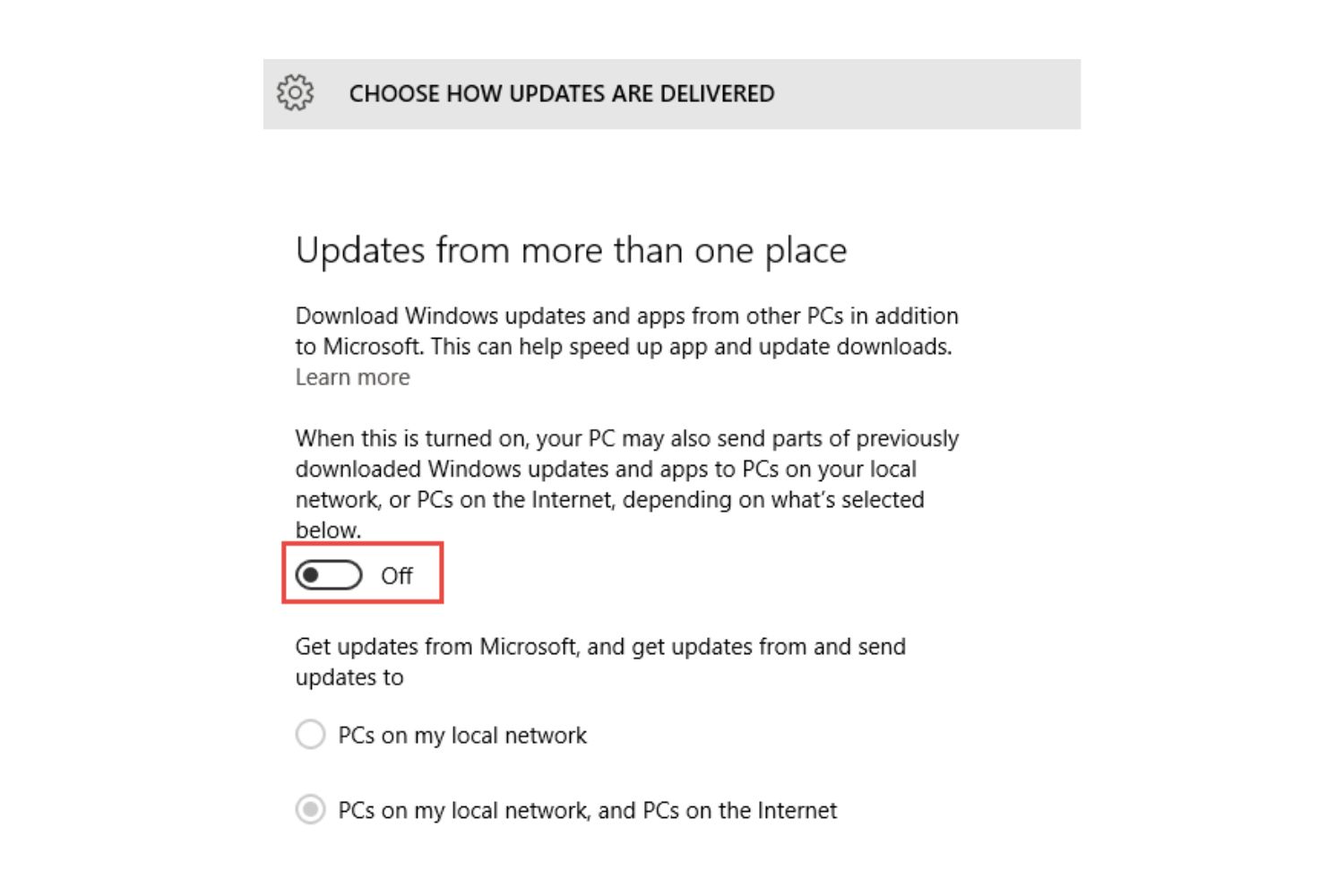Introduction:
Welcome to the vast world of technology, where innovative solutions and new ways of connectivity are constantly emerging. One such concept that has gained popularity in recent years is Peer-to-Peer, commonly known as P2P. Whether you’re technologically-savvy or just a curious individual looking to expand your knowledge, understanding what P2P means and how it works is essential.
P2P refers to a decentralized network architecture that allows individuals or “peers” to interact with each other directly, without the need for a central server or authority. This means that instead of relying on a single central entity to facilitate communication or file sharing, P2P networks distribute the workload and resources across all connected participants. In essence, P2P empowers users by granting them the ability to collaborate and share data directly among themselves.
The rise of P2P technology can be traced back to the early 2000s when file-sharing platforms such as Napster and LimeWire gained popularity. These platforms enabled users to share music, videos, and other files directly with each other, revolutionizing the way we consume and distribute digital content. Since then, P2P has evolved beyond file sharing, finding applications in various domains, ranging from communication protocols to decentralized finance.
Understanding how P2P works requires a grasp of its fundamental principles. In a typical P2P network, each participant acts as a client and a server simultaneously. This means that users both request and provide resources within the network. When a user requests a file or resource, the P2P network searches for available sources among the connected peers. Once a suitable source is identified, the file is fetched directly from that peer’s device, eliminating the need for a centralized server to distribute the content.
P2P networks offer several advantages over traditional client-server architectures. Firstly, the decentralized nature of P2P ensures increased reliability and scalability. Since the workload is distributed across multiple peers, the overall network performance improves, and the risk of a single point of failure is reduced. Additionally, P2P networks are inherently more resistant to censorship and control as there is no single authority that can dictate or restrict the flow of information.
Definition of P2P:
Peer-to-Peer (P2P) is a network architecture that allows individuals or peers to connect and interact with each other directly, without the need for a central server or intermediary. In this decentralized model, each participant in the network acts as both a client and a server, sharing resources and information with other participants.
P2P networks are based on the principle of distributed computing, where the workload and responsibilities are shared among all connected peers. This means that every peer in the network is capable of requesting and providing resources, whether it’s files, computational power, or other services.
Unlike traditional client-server architectures, where requests are sent to a central server that manages and distributes the resources, P2P networks rely on the collective power of all connected peers. When a user initiates a request in a P2P network, the request is broadcasted to all connected peers, and each peer responds with available resources or information. The requester then retrieves the desired resources directly from the peers offering them.
This decentralized nature of P2P networks has a number of implications. Firstly, it allows for greater scalability and resilience. Since there is no central server handling all requests, the network can easily accommodate a large number of users without becoming overwhelmed. Additionally, if any peer in the network goes offline or becomes unavailable, the remaining peers can continue to function and provide resources, ensuring the network remains operational.
P2P networks have gained prominence in various domains due to their decentralized and cooperative nature. In addition to file sharing, P2P technology has been applied to areas such as distributed computing, content delivery networks, decentralized finance, and even blockchain networks. These applications leverage the power of P2P networks to create efficient and robust systems that are not dependent on a single point of failure.
It’s important to highlight that P2P networks can exist both on local networks, where devices are physically close to each other, and on the internet, enabling connections between devices across vast geographical distances. With P2P technology, individuals can collaborate, share resources, and communicate with each other without relying on central authorities, revolutionizing the way we connect and interact in the digital era.
How P2P Works:
P2P, or Peer-to-Peer, networks operate based on a distributed architecture, where each participating node, or peer, collaborates with other peers to share resources and information. Understanding how P2P works requires a closer look at the key components and processes involved.
When a user joins a P2P network, their device becomes a peer, capable of both requesting and providing resources. Each peer maintains a list of other peers in the network, known as the peer list or peer registry. This list allows peers to discover and connect with each other.
When a peer wants to request a resource, such as a file, they initiate a search or query within the network. This search request is propagated to the connected peers. Peers receiving the query then check their own resources to see if they have the requested file. If a peer has the file, they respond directly to the requesting peer with the file’s location and other relevant information.
Once the requesting peer receives the response from one or more peers, it can establish a direct connection with the offering peer(s) to retrieve the file. This direct communication bypasses the need for a central server, making the transfer faster and more efficient. The requesting peer can initiate simultaneous connections with multiple offering peers to speed up the download process.
It’s important to note that in P2P networks, resources are not only acquired from a single source but can be obtained from multiple peers. This approach, known as multi-sourcing, allows for faster and more reliable downloads since download speeds can be aggregated from different peers. Additionally, multi-sourcing enhances the network’s resilience, as it reduces the impact of a single peer going offline.
P2P networks employ various mechanisms to ensure fairness and prevent abuse within the network. Some networks implement tit-for-tat algorithms, which promote reciprocity by prioritizing peers that actively share resources. This algorithm penalizes peers that only consume resources without contributing. Other networks may have reputation systems or rating mechanisms to identify reliable and trustworthy peers in the network.
Security is also a major consideration in P2P networks. Peers need to ensure that the resources they download are authentic and unaltered. Thus, cryptographic techniques such as hash verification are commonly used to verify the integrity of files and ensure they have not been tampered with during transit.
In summary, P2P networks rely on the collaborative effort of connected peers to share resources and information. By eliminating the need for a central server, P2P networks offer faster downloads, increased resilience, and distributed computing capabilities. Whether it’s file sharing, content delivery, or other applications, P2P technology continues to reshape how we interact and share in the digital world.
Advantages of P2P:
Peer-to-Peer (P2P) networks offer several advantages over traditional client-server architectures. These advantages have contributed to the widespread adoption and popularity of P2P technology in various domains. Let’s explore some of the key benefits of P2P networks:
1. Decentralization and Resilience: In a P2P network, there is no single point of failure. The absence of a central server means that the network can continue functioning even if some peers go offline or become unavailable. This decentralized nature contributes to the overall resilience and reliability of the network.
2. Scalability: P2P networks are highly scalable due to their distributed architecture. As more peers join the network, the resources and computing power increase, allowing the network to handle a larger number of users and requests. This scalability is crucial in environments where the number of participants can fluctuate drastically.
3. Efficient Resource Utilization: P2P networks optimize resource utilization by leveraging the computing power and storage capacity of all connected peers. Unlike client-server architectures, where a central server bears the entire burden, P2P networks distribute workloads across multiple peers, ensuring efficient utilization of available resources.
4. Faster Download Speeds: P2P networks often enable faster downloads compared to traditional client-server models. By utilizing multi-sourcing, where files are obtained from multiple peers simultaneously, download speeds can be significantly improved. This approach reduces reliance on a single source and maximizes available bandwidth.
5. Lower Bandwidth Costs: P2P networks can help reduce bandwidth costs for content providers. When delivering large files or distributing popular content, P2P networks can offload the burden from a central server, allowing the content to be distributed among the connected peers. This can lead to significant cost savings for providers with high traffic demands.
6. Enhanced Privacy and Security: P2P networks offer increased privacy and security compared to centralized systems. Since data is directly shared between peers, there is no need to trust a central authority with sensitive information. Additionally, P2P networks often employ encryption and verification mechanisms to ensure the authenticity and integrity of transferred data.
7. Resistance to Censorship and DDoS Attacks: P2P networks are inherently more resistant to censorship and distributed denial-of-service (DDoS) attacks. The decentralized nature of P2P prevents the single point of control that can be targeted in traditional client-server architectures. This makes it more challenging for adversaries to disrupt the network or control the flow of information.
8. Collaboration and Peer-to-Peer Interactions: P2P networks enable direct interactions and collaborations between users without the need for intermediaries. This fosters a sense of community and empowers individuals to connect, share resources, and exchange knowledge or services directly with each other.
In summary, the advantages of P2P networks, such as decentralization, scalability, efficient resource utilization, faster downloads, enhanced privacy and security, resistance to censorship and DDoS attacks, and peer-to-peer interactions, make them a compelling choice for various applications and revolutionize the way we connect and share in the digital realm.
Disadvantages of P2P:
While Peer-to-Peer (P2P) networks offer numerous advantages, they also come with their fair share of disadvantages. It’s essential to consider these drawbacks when evaluating the feasibility and suitability of using P2P technology. Let’s explore some of the key disadvantages of P2P networks:
1. Lack of Control: P2P networks operate in a decentralized manner, which means there is no central authority or server to enforce rules or policies. This lack of control can lead to challenges in managing the network, ensuring compliance with legal regulations, and mitigating malicious activities such as piracy or distribution of illegal content.
2. Dependency on Peer Availability: P2P networks heavily rely on the availability and willingness of peers to share resources. If there is a limited number of peers offering a particular file or service, or if they are not online at the time of the request, the user may experience delays or difficulties in accessing the desired resource.
3. Security Risks: P2P networks carry inherent security risks. Since data is exchanged directly between peers, there is an increased potential for malicious activities, such as the distribution of malware, viruses, or unauthorized access to sensitive information. Peers must exercise caution and employ appropriate security measures to mitigate these risks.
4. Unequal Resource Distribution: In P2P networks, not all peers may have equal capabilities or resources to contribute. Some peers may have limited bandwidth or storage capacity, which can result in unequal resource distribution. This imbalance can impact the overall efficiency and availability of resources within the network.
5. Quality and Reliability Concerns: P2P networks do not guarantee the quality or reliability of shared resources. Since files and content are obtained from multiple peers, there is no central authority to ensure the authenticity, accuracy, or integrity of the resources. Users may encounter incomplete or corrupted files, leading to a less-than-optimal user experience.
6. Performance Impacts: Participating in a P2P network can impact the performance of a user’s device. Running P2P software and sharing resources may consume computational resources, bandwidth, and power. This can result in slower device performance or increased energy consumption, particularly on devices with limited resources.
7. Legality and Copyright Concerns: P2P networks have been associated with copyright infringement and piracy due to the ease with which copyrighted materials can be shared. While P2P networks themselves are not inherently illegal, the unauthorized distribution of copyrighted content can lead to legal consequences for both users and platform operators.
8. Lack of Support and Troubleshooting: In a P2P network, there is no centralized support system to address user issues or provide troubleshooting assistance. Users may have to rely on community forums, online resources, or self-help methods to resolve technical problems they encounter.
It’s important to weigh these disadvantages against the benefits of P2P networks when considering their implementation. Mitigating measures, such as implementing security protocols, enforcing policies, and promoting responsible usage, can help address some of the challenges associated with P2P networks.
Use Cases of P2P Technology:
Peer-to-Peer (P2P) technology finds applications in various domains, leveraging its decentralized and collaborative nature to create innovative solutions. Let’s explore some of the key use cases where P2P technology has been successfully implemented:
1. File Sharing: Perhaps the most well-known application of P2P technology is file sharing. Platforms like BitTorrent, eDonkey, and others have revolutionized the way we share and distribute digital content. P2P file sharing enables faster downloads by obtaining files from multiple sources simultaneously and reduces the burden on centralized servers.
2. Content Delivery Networks (CDNs): P2P technology has been integrated into Content Delivery Networks to improve the distribution of large files, streaming media, and other high-bandwidth content. By allowing users to download content from nearby peers, CDNs can reduce the load on central servers, increase download speeds, and enhance scalability.
3. Distributed Computing: P2P networks have been utilized for distributed computing tasks that require significant computational power. Projects like SETI@home and Folding@home leverage idle computing resources of participating peers to analyze complex data and contribute to scientific research in areas such as astronomy and protein folding.
4. Decentralized Finance (DeFi): P2P technology is at the heart of the decentralized finance movement. Blockchain platforms like Ethereum enable peer-to-peer transactions, lending, and smart contract execution without the need for intermediaries or central authorities. DeFi applications leverage the power of P2P networks to create transparent, secure, and permissionless financial ecosystems.
5. Voice over IP (VoIP) Communication: P2P technology is used in Voice over IP services, allowing users to make voice and video calls directly between devices. P2P-based VoIP applications like Skype and WebRTC enable communication without relying on centralized servers, improving privacy, and reducing costs.
6. Collaborative Content Creation: P2P technology facilitates collaborative content creation, enabling users to work together on documents, spreadsheets, and other digital assets in real-time. Platforms like Google Docs and Etherpad utilize P2P architecture to synchronize and merge changes made by multiple participants, fostering collaboration and teamwork.
7. Secure Messaging and Communication: P2P networks are utilized in secure messaging applications that prioritize privacy and encryption. Platforms like Signal and Peerio utilize P2P architecture to establish end-to-end encrypted communication channels between users, ensuring that data and messages remain confidential and protected.
8. IoT Device Communication: P2P networks have been explored as a means of enabling direct communication and data exchange between Internet of Things (IoT) devices. P2P-based IoT networks can eliminate the need for centralized gateways, streamline device-to-device communication, and enhance scalability in large-scale IoT deployments.
These are just a few examples of the versatile applications of P2P technology. As the technological landscape continues to evolve, P2P networks will likely find new use cases and further shape our digital interactions and experiences.
P2P vs. Client-Server Architectures:
Peer-to-Peer (P2P) and client-server architectures represent different approaches to network design and resource sharing. Understanding the differences between these two models is essential for evaluating their respective strengths and limitations. Let’s compare P2P and client-server architectures:
Resource Distribution: In a client-server architecture, resources are centrally controlled and distributed by a single server. Clients, or users, connect to the server to request resources or services. In contrast, P2P networks distribute resources among all connected peers. Each peer can act as both a client and a server, sharing their resources directly with other peers.
Control and Authority: Client-server architectures are characterized by a central authority, typically the server, that manages and controls the network. This central authority enforces rules and policies, handles authentication, and controls the flow of resources. In contrast, P2P networks operate in a decentralized manner, with no central authority. Peers in a P2P network collaborate independently, establishing their own rules, policies, and resource sharing agreements.
Scalability: Client-server architectures can face scalability challenges as the number of clients increases. The centralized server might become overwhelmed with the increasing demands, resulting in performance bottlenecks. P2P networks, on the other hand, are highly scalable due to their distributed nature. As more peers join the network, additional resources and computing power become available, ensuring improved scalability and overall network performance.
Reliability: Client-server architectures can suffer from a single point of failure. If the server becomes unavailable or experiences issues, the entire network can be affected. P2P networks, however, are more resilient as each peer is capable of providing resources. If one peer goes offline, the remaining peers can continue functioning, ensuring uninterrupted resource availability.
Ease of Setup and Maintenance: Client-server architectures typically require dedicated servers with robust infrastructure, making setup and maintenance more complex and costly. P2P networks, on the other hand, are generally easier to set up and maintain since there is no need for centralized server infrastructure. Peers can easily join and leave the network without requiring significant infrastructure changes.
Privacy and Security: Client-server architectures may raise privacy concerns as the server operates as a central authority with access to user data. P2P networks, being decentralized, offer enhanced privacy as data is shared directly between peers, without a central authority having control or access to the data. However, P2P networks may raise security concerns as peers need to ensure the authenticity and integrity of shared resources.
Application Scope: Client-server architectures are well-suited for applications that require centralized control, strict resource management, and reliable access to resources. P2P networks excel in applications that require scalability, distributed computing, file sharing, and decentralized collaboration, where the sharing of resources and information between peers is vital.
Both client-server architectures and P2P networks have their merits and are suitable for different use cases. Selecting the appropriate architecture depends on the specific requirements of the application, considering factors such as scalability, reliability, security, and degree of decentralization required.
Conclusion:
Peer-to-Peer (P2P) technology has revolutionized the way we connect, share, and collaborate in the digital world. Its decentralized architecture and collaborative nature offer numerous benefits and have paved the way for innovative applications and solutions. By enabling direct interactions and resource sharing between peers, P2P networks have reshaped the landscape of file sharing, content delivery, distributed computing, decentralized finance, and more.
P2P networks offer advantages such as increased resilience, scalability, efficient resource utilization, faster downloads, enhanced privacy and security, resistance to censorship, and the ability to foster collaboration and peer-to-peer interactions. These benefits have made P2P networks attractive for a wide range of applications, from file sharing platforms and content delivery networks to decentralized finance and secure messaging.
However, it is important to acknowledge the potential disadvantages of P2P networks, such as the lack of control, dependency on peer availability, security risks, unequal resource distribution, and performance impacts. Understanding these challenges allows for the implementation of appropriate measures to address them effectively.
In comparison to traditional client-server architectures, P2P networks offer a decentralized approach to resource distribution, enhanced scalability, increased resilience, and improved privacy. However, client-server architectures still hold value in applications that require centralized control, strict resource management, and reliable access to resources.
As technology continues to advance, P2P networks are likely to find even more diverse and innovative use cases. From decentralized finance and IoT device communication to collaborative content creation and secure messaging, P2P technology enables new possibilities and reshapes the way we interact and share information in the digital era.
Whether you’re a casual internet user, a content provider, or a developer exploring new ways of connectivity, understanding P2P technology and its applications can expand your horizons and empower you to leverage its benefits effectively.

























